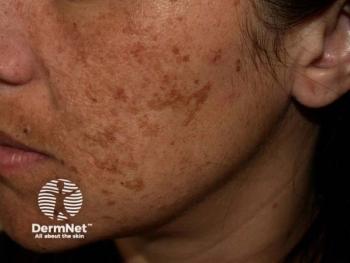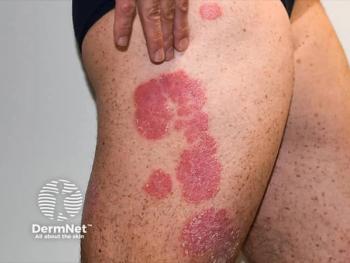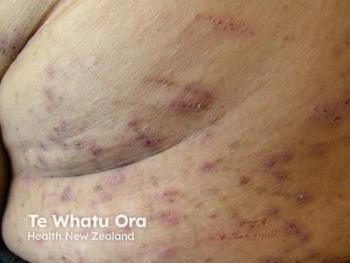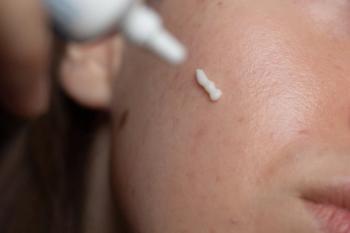
Elevate-Derm 2025: Emerging Trends and Therapies in Clinical Research
Key Takeaways
- Dermoscopy proficiency standards for PAs were developed using a modified Delphi method, addressing a gap in formal education and potentially improving patient care.
- Treatment of elderly patients with psoriasis and skin cancer requires personalized approaches, considering age-related factors and barriers to comprehensive care.
Discover innovative research pearls at the Elevate-Derm Summer Conference 2025, focusing on psoriasis, skin cancer, and more.
At the
Establishing Dermoscopy Standards for Physician Assistants
A study by Young et al used a modified Delphi method to develop expert consensus on dermoscopy proficiency standards for physician assistants (PAs), as there have been no prior guidelines.1 An expert panel of 8 dermatologists and 6 PAs evaluated 54 skin conditions with dermoscopic features to determine which should be included in foundational PA training. Consensus was reached on 39 diagnoses—14 suitable for primary care PAs and 25 for dermatology PAs. The results address a gap in formal dermoscopy education for PAs and establish evidence-based learning objectives. Cheever noted that “utilizing these recommendations when educating and training PAs could positively impact patient care and conserve health care resources by minimizing unnecessary biopsies and referrals for benign lesions.”
Navigating Psoriasis and Skin Cancer Treatment in Elderly Patients
Two pieces of literature explored the treatment of elderly patients with psoriasis and nonmelanoma skin cancer regarding global aging trends.2,3 With these complex treatment landscapes, the variety of options can be even more complicated in this group due to age-related factors. Newer therapies, although safe and effective, are typically underprescribed in these patients. When caring for geriatric patients, providers must personalize treatment to each individual’s goals, quality of life, frailty, comorbidities, and potential drug interactions, while keeping them involved in the process. Providers also need to be aware of barriers such as transportation, mental health integrations, cost, and mobility, which may prevent comprehensive care.
Seborrheic Dermatitis Insights via Tape-Strip RNA Sequencing
Another presented study used minimally invasive tape-strip sampling and RNA sequencing to characterize the molecular profile of seborrheic dermatitis, which affects 2-5% of adults.4 Compared to healthy controls (n = 18), those with seborrheic dermatitis lesions (n = 26) showed strong upregulation of IL-23/Th17 and Th22 immune pathways, limited Th1 activation, and minimal Th2 involvement. Significant downregulation of genes involved in skin barrier function and lipid metabolism was also observed. These findings suggest seborrheic dermatitis has a distinct immune and barrier signature, making tape-stripping a practical tool for profiling inflammatory skin diseases.
Antihypertensive Medications and Increased Actinic Keratosis Treatment
This population-based, retrospective study from Mendoza et al analyzed over 280,000 patients with actinic keratoses (AK) using the TriNetX database to assess the association between antihypertensive use and AK treatment frequency.5 Patients on hydrochlorothiazide (HCTZ), lisinopril, metoprolol, and carvedilol had significantly higher rates of AK treatments, with HCTZ showing the greatest increase across all modalities, suggesting a stronger photosensitizing or carcinogenic effect. Losartan and hydralazine users had lower rates of some treatments, while diltiazem and clonidine were not linked to increased AK treatment. Cheever mentioned that these findings “underscore the importance of awareness and proactive dermatology management of patients on certain BP meds,” highlighting the need for more consistent skin exams.
Rethinking Sunscreen Use and Collagen Supplement Claims
Cheever also touched on research that can further highlight patient perspectives on skin care and aging. One cross-sectional trial examined whether sunscreen cost affects how much people apply.6 Results showed an inverse relationship between sunscreen cost and application amount as use decreased by about 1% for every $1/oz increase in price (p = .0016). Cost and application site were the only significant factors influencing usage. The study highlights how higher sunscreen prices may contribute to underapplication, increasing sunburn and skin cancer risk, especially on the face.
Another systematic review and meta-analysis examined 23 randomized controlled trials involving 1,474 participants to assess the effects of collagen supplements on skin aging.7 While the overall analysis showed significant improvements in skin hydration, elasticity, and wrinkles, subgroup analyses revealed that only industry-funded and low-quality studies reported benefits. In contrast, independently funded and high-quality studies showed no significant effects. These emphasize the need for cost-conscious skin care recommendations and broader sun protection strategies for overall skin health improvement, rather than unreliable products like collagen supplements.
References
1. Young P, Middleton H, Griffith C, et al. Expert consensus recommendations on dermoscopy proficiency standards for physician assistants: results of a modified Delphi survey. Journal of Dermatology for Physician Assistants 19(1):p 14-19, Winter 2025. | DOI: 10.1097/jdpa.0000000000000047
2. McKernan M, Schempp A. Optimizing psoriasis treatment for elderly patients: a spotlight on biologics and small molecules. Journal of Dermatology for Physician Assistants 19(1):p 36-40, Winter 2025. | DOI: 10.1097/jdpa.0000000000000045
3. Lazareth V, DiRuggiero D. A Dermatology Provider’s Guide to Managing Nonmelanoma Skin Cancer in the Elderly. JDNPPA.
4. Ungar B, Manson M, Kim M, et al. Tape-strip profiling identifies unique immune and lipid dysregulation in patients with seborrheic dermatitis. J Am Acad Dermatol. 2025;92(6):1277-1287. doi:10.1016/j.jaad.2025.01.082
5. Mendoza R, Yu J, Ibraheim MK, et al. Association between use of antihypertensives and treatment of actinic keratoses: A TriNetX population-based study. J Am Acad Dermatol. 2025;92(6):1372-1375. doi:10.1016/j.jaad.2025.01.066
6. Fernandez K, Schneider J, Moore D, Wu BV, Johal A, Wei ML. Affordability matters: A cross-sectional study on sunscreen cost and application amount. J Am Acad Dermatol. 2025;92(5):1103-1104. doi:10.1016/j.jaad.2025.01.007
7. Myung SK, Park Y. Effects of Collagen Supplements on Skin Aging: A Systematic Review and Meta-Analysis of Randomized Controlled Trials. Am J Med. Published online May 3, 2025. doi:10.1016/j.amjmed.2025.04.034
Newsletter
Like what you’re reading? Subscribe to Dermatology Times for weekly updates on therapies, innovations, and real-world practice tips.


















